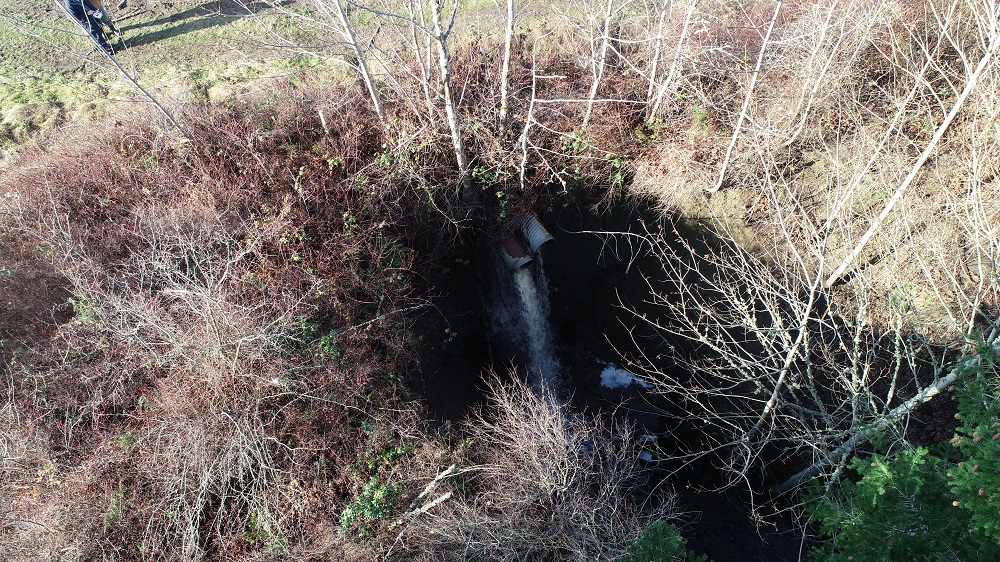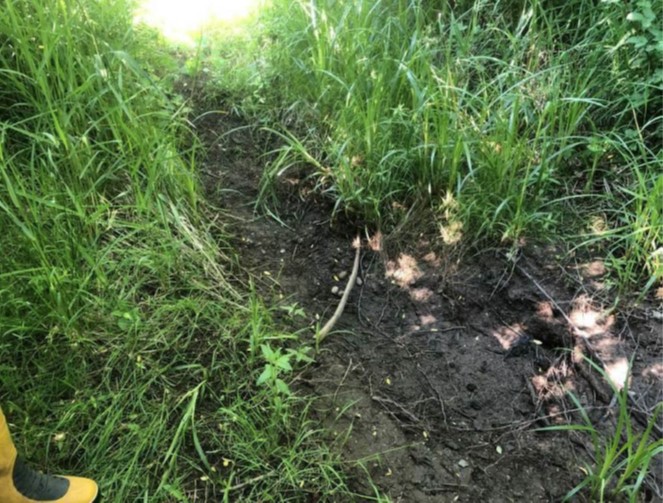Shelly Creek Fish Habitat Restoration - Phase II
We recently learned that the Pacific Salmon Foundation (PSF) has approved our grant application for $22,200 to restore Coho Salmon rearing habitat in Shelly Creek upstream of Martindale Pond (the site of last year's restoration project). Woohoo!
Shelly Creek flows through the Shelly Farm (located at Stanford Avenue in Parksville) before flowing into Martindale Pond and under Martindale Road on its way to the Englishman River.

Hundreds of Coho fry are observed annually in the section of creek that runs northeast through the farm below the culverts identified in the above image. Unlike Martindale Pond where Coho fry from the Englishman River move in to overwinter and return to the river in the spring after they have smolted, it is believed the fry on Shelly Farm are the offspring of Coho Salmon seen spawning in the farm section of creek below the culverts. The fry remain on the farm all year until they smolt and migrate through Martindale Pond to the Englishman River the following spring.
 The two metal culverts overhang a ridge approximately 5 m high and have created a waterfall, as seen in the drone photo to the left. The falling water has created a large erosion gulley in the stream channel. The owners of Shelly Farm have seen the downstream section of the creek fill with sediment over the decades. Sediment comes from sources upstream of the farm in addition to that from the erosion gully, and has buried the natural stream bed. Photo by Robert Roycroft
The two metal culverts overhang a ridge approximately 5 m high and have created a waterfall, as seen in the drone photo to the left. The falling water has created a large erosion gulley in the stream channel. The owners of Shelly Farm have seen the downstream section of the creek fill with sediment over the decades. Sediment comes from sources upstream of the farm in addition to that from the erosion gully, and has buried the natural stream bed. Photo by Robert Roycroft

The sediment has resulted in the creek becoming overgrown and clogged with mud and invasive species including Reed Canary Grass and Himamlayan Blackberry (see right-hand photo). The result is a loss of Coho fry rearing habitat and very low or no water flow in the summer, trapping fry in small pools that eventually dry up.
The PSF grant is for the excavation of the creek by Parksville Heavy Equipment to remove the sediment and invasive species, and restore rearing habitat along with native riparian vegetation. Sediment collection ponds will be constructed to trap sediment and prevent more sedimentation of the creek. Our Biologist, Dave Clough, provided the design and workplan for the excavation and restoration work.
The plan is to conduct the work in late August when water flow is at its lowest in the creek. It will require moving fry downstream of the work area plus an Environmental Management Plan to minimize sedimentation of Shelly Creek from the excavator work. We are very excited about this next phase of the restoration work on Shelly Creek. Stay Tuned